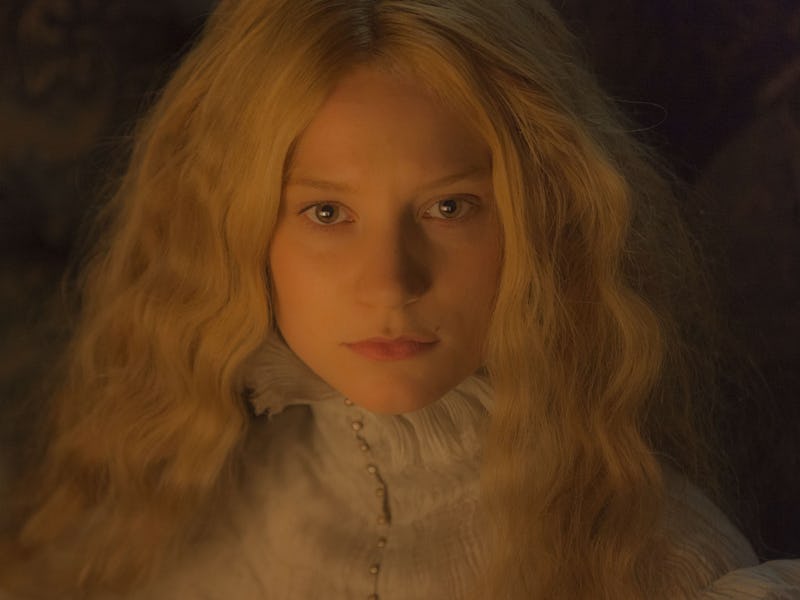Guillermo del Toro’s Misunderstood Gothic Romance Deserves To Find Its Audience
The horror was for love.

Edge of Tomorrow (2014) isn’t a generic sci-fi vehicle for Tom Cruise’s invincible action star persona, but a high-concept film that instead comically subverts it, casting the actor as a coward fated to perish over and over and over in a Groundhog Day-like time loop. Not that the film’s marketing made any of this clear. Likewise, Jennifer’s Body (2009) isn’t a trashy horny fantasy, as the film’s promotional materials built around Megan Fox’s pinup status would have you believe, but an incisive feminist thriller that preceded the #MeToo movement. And Drive (2011) isn’t a Fast & Furious-style action thriller, as one Michigan resident suing the distributor for its “misleading trailer” found out the hard way, but a neon-noir with a near-silent Ryan Gosling.
Okay, that last one is a bit silly but it gets at the self-defeating end result of misleading movie marketing — who among us can’t relate to the bait-and-switch frustration of the movie you were expecting to see versus the movie you ended up getting? Even a great film can seem lackluster at the time just by virtue of it not being the one you were promised. It’s a feeling filmmaker Guillermo del Toro knows well, having said that in his 30-year career, he’s had “three wonderful films hampered and hobbled by misguided marketing.”
One of them is Crimson Peak, a lavish gothic romance which, mismarketed as a straightforward horror movie, ended up a commercial flop. Pretty much every ghostly sequence in the two-hour-long film was edited into its three-minute-long trailer, crafted as a relentless onslaught of high-strung tension and nervy jumpscares, an impression bolstered by a Stephen King endorsement describing the film as “terrifying.” Earning $74 million worldwide against its $55 million budget, it became del Toro’s worst wide opening since his 1997 sci-fi horror Mimic.
“The thing that will always, pun intended, haunt that movie is that it was sold as a horror movie,” said del Toro in an interview. “I remember distinctly, when we had meetings [about promotion], they were all targeted toward getting the horror audience for the opening weekend. And I knew we were doomed.”
Crimson Peak, instead, is moody and atmospheric. Its ghosts don’t evoke menace so much as melancholy. The film borrows heavily from gothic fiction, with its environments of claustrophobic dread, dilapidated structures and a past that casts a shroud over present happiness. American heiress Edith Cushing (Mia Wasikowska) is the innocent and trusting young woman, with Sir Thomas Sharpe (Tom Hiddleston) as the brooding Byronic hero she marries. He whisks her away to his crumbling desolate mansion in snowy England, with its off-limits rooms and concealed secrets — other genre staples. Ghostly apparitions begin haunting Edith, in the house and in her dreams, but she’s also up against a more formidable force. Under the composed politeness of Thomas’ sister Lucille (Jessica Chastain) lurks a predatory glint. As the movie progresses, her attachment to him is revealed to be unnervingly possessive.
The film has echoes of Daphne du Maurier’s 1938 Gothic novel Rebecca, in which an unnamed young woman is swept off to a remote English estate after a rapid courtship and marriage to a wealthy, much older widower. There, she finds herself unbalanced not just by the unfamiliar setting but also by the immense fear of not measuring up to her late predecessor. Edith and Lucille’s dynamic mirrors that of the young woman’s fragile naïveté contrasted against the cruel, dominating streak of the housekeeper, Mrs. Danvers.
Mismarketed as a horror movie, Crimson Peak is an overlooked Gothic Romance masterpiece.
Crimson Peak also frequently calls to mind Charlotte Brontë’s 1847 romance novel Jane Eyre. Orphaned, albeit at different ages, the protagonists of both see ghosts as children — Jane, her uncle, and Edith, her late mother. At Thornfield Hall, Jane is unsettled by strange screams from the estate, much like Edith, rattled by Allerdale Hall’s strange whispers and groans. In both Crimson Peak and Jane Eyre, however, reality is infinitely more horrific than imagined or supernatural terrors. Both Thomas and Edward Rochester — who Jane falls in love with — are already ‘taken’ men, despite their declarations of affection for these women. Jane discovers that Rochester had his first wife chained in the attic after she began displaying signs of mental illness. In Crimson Peak, the madwoman is no longer locked away in the house, she’s running it. The ghosts turn out to be Edith’s allies, attempting to warn her.
For all its spectral figures, this is a film that’s thrillingly alive. Strikingly shot by cinematographer Dan Laustsen, Allerdale Hall’s mines of red clay seep into the surrounding snow like pooling blood. A slow-accumulating tension is punctuated by bursts of bloodshed. And there’s a swooning, if ultimately doomed romance.
“It’s not [a ghost story]. It’s more a story with a ghost in it,” says Edith early on. She’s speaking of the story she’s writing, but this could well have been del Toro telling audiences what to expect upfront. A week before its release, the director even took to Twitter to issue a reminder: Crimson Peak: not a horror film. A Gothic Romance.
A decade on, unencumbered by the baggage of its marketing, there’s no better time to surrender to its spell.